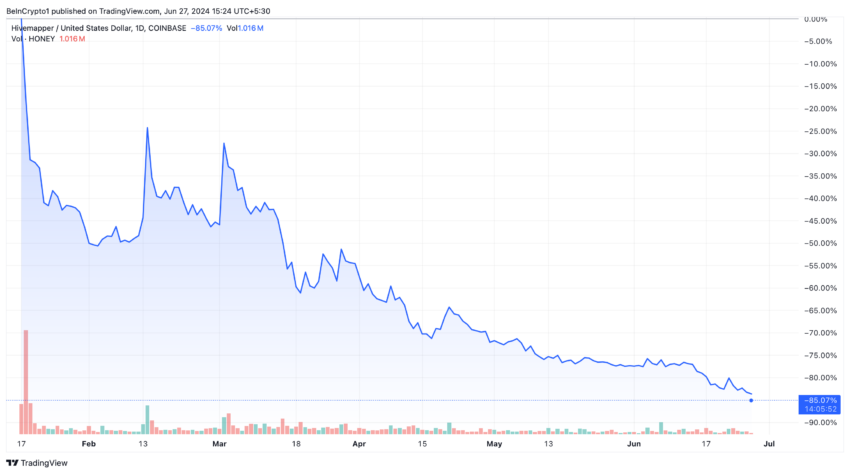Giants like Google Maps dominate the mapping arena. However, a new competitor has emerged from the decentralized physical infrastructure network (DePin) – Hivemapper.
The DePin startup, employing blockchain technology, claims its map database expands four to five times faster than Google’s. This rapid scaling indicates a transformative approach to data collection and use in mapping.
Co-Founder Explains How Hivemapper Scaled Its Database
Ariel Seidman, co-founder of Hivemapper, credits the company’s unique contributor engagement strategies for this growth. For instance, an early adopter named Brad purchased 100 Hivemapper dashcams. He distributed these to Uber and Lyft drivers, sharing his earned HONEY tokens.
“So that really helped the network grow because he was identifying the right kind of drivers. He had the capital. A lot of Uber drivers may not have the capital. So that was one really clever example,” Seidman said.
Furthermore, another entrepreneur integrated 1,000 Hivemapper devices across his commercial fleet. This deployment across numerous countries significantly enhanced the map’s coverage and data accuracy, demonstrating the platform’s scalability and commercial viability.
Read more: What Is DePIN (Decentralized Physical Infrastructure Networks)?
Despite these successes, challenges persist. According to a Franklin Templeton report, while Hivemapper has impressively mapped 21% of the world’s roads in just 31 months, it struggles with demand.
“Hivemapper has had great success growing the number of contributors providing mapping data to the network, with over 60,000 contributors. However, the project has not seen the same relative growth in demand as on the supply side,” Franklin Templeton said.
This imbalance is crucial because Hivemapper diverges from traditional Web2 services like Google Maps, which do not offer monetary rewards. Hivemapper incentivizes its contributors with HONEY tokens.
Although effective for expanding the map’s supply, insufficient demand for data could lead to an inflated token supply, potentially devaluing it. Indeed, despite a broader crypto bull market, the value of HONEY tokens has plummeted by over 85% year-to-date.
These nuances highlight the volatile nature of DePin projects, where supply and demand must be carefully balanced. As Hivemapper expands its contributor base and coverage, it faces the task of developing a market for its data that matches this growth. Without this balance, the sustainability of its token-based incentive model remains in jeopardy.
The journey of Hivemapper is more than an isolated case. It offers a novel blueprint for how decentralized technologies can disrupt traditional industries by realigning incentives.
Read more: Top 9 Web3 Projects That Are Revolutionizing the Industry
In the mapping market, where data is increasingly valuable, a DePin-based system’s ability to quickly and cost-effectively compile vast datasets offers a compelling alternative to established entities.
Disclaimer
In adherence to the Trust Project guidelines, BeInCrypto is committed to unbiased, transparent reporting. This news article aims to provide accurate, timely information. However, readers are advised to verify facts independently and consult with a professional before making any decisions based on this content. Please note that our Terms and Conditions, Privacy Policy, and Disclaimers have been updated.
Credit: Source link




